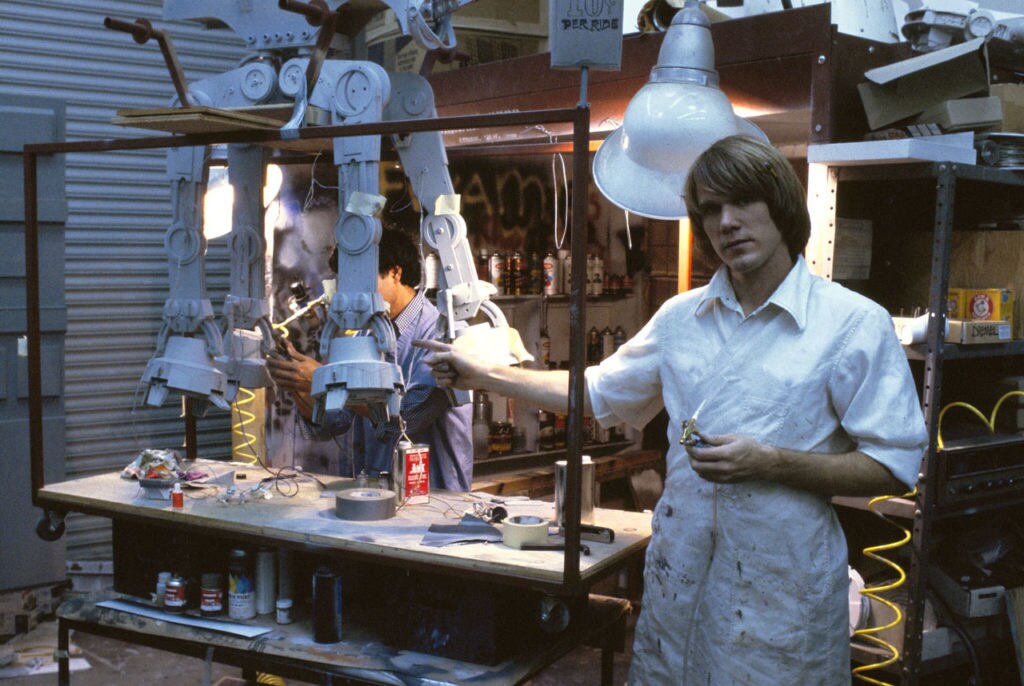Find out how a stop-motion legend and real and fictional vehicles served as inspiration.
Much to Learn You Still Have is a rundown of trivia and fun facts, both in-universe and behind-the-scenes, about the aliens, droids, ships, and species of the Star Wars galaxy. Whether you’ve never set foot in a cantina or you’re a well-traveled Jedi Master, you’ll find the intel you need.
Fans have come to know and love AT-ATs, or All Terrain Armored Transport vehicles, after seeing them stomping their way around Hoth in Star Wars: The Empire Strikes Back. But do you know the inspiration behind the design or the name of the stop-motion legend who advised on their creation?
Here are four things you might not have known about the AT-AT.
1. There's something big on the horizon.
Standing at over 20 meters tall, the staggering AT-AT is fearsome. As Luke learned in The Empire Strikes Back, an AT-AT can easily crush a snowspeeder under its feet. And since a snowspeeder is only about 5.3 meters, you can imagine how big those mechanical feet must be.
Fun Fact #1: Special training is required for AT-AT drivers to learn how to control the leg movements. Since that training is expensive, AT-AT drivers are also outfitted with life support suits.
2. Real and fictional vehicles served as four-legged inspiration.
The AT-AT was designed with a handful of inspirations in mind. Joe Johnston has said that he came across a copy of a vintage promotional brochure from US Steel that featured a four-legged walking truck, giving him the idea for a massive four-legged military vehicle. General Electric had also created their own walking truck. And George Lucas has noted that the martian walking machines from War of the Worlds was one of the biggest influences.
Fun Fact #2: To match the mechanical sounds of the AT-ATs walking, John Williams added additional instruments into his orchestra. “'Battle in the Snow' has an unusual orchestration calling for five piccolos, five oboes, a battery of eight percussion, two grand pianos, and two or three harps, in addition to the normal orchestral complement," Williams has said.
3. Stop-motion was the way to go.
Capturing the AT-ATs on screen was a big endeavor, almost as big as the AT-ATs themselves. Ideas on how to bring these giants to life ranged from radio-controlled wheeled cars to tractor tanks to marionettes. In the end they decided to use stop motion and George Lucas and Gary Kurtz met with stop-motion legend Ray Harryhausen for advice.
Fun Fact #3: For the scene of Luke being pulled up to the bottom of the AT-AT, stuntman Colin Skeaping was airlifted under a helicopter.
4. The AT-ATs had to be precise.
Jon Berg, stop-motion animator, came up with a plan to make sure the figures would be posable. “It has to hold that pose in each position you place it in without slipping or sliding; it has to work very smoothly, so the animation is as clean and precise as you can get it…” said Berg. And precise they were! It was noted that preparation for the walker shots took about 10 months and about 4-6 hours of shooting time to complete each shot.
Fun Fact #4: To get the walking motion of the AT-ATs down perfect, Dennis Muren filmed the movement of an elephant. This wasn’t just any elephant, it was Mardji, who was used as a bantha in A New Hope.
Let us know what your favorite AT-AT facts are in the comments below!
And be sure to check out our “Much to Learn” segment on The Star Wars Show this week, which you can watch below!
Sources: The Making of The Empire Strikes Back, J.W. Rinzler, Del Rey, 2010., Star Wars: Absolutely Everything You Need To Know Updated and Expanded, Adam Bray, Kerrie Dougherty, Cole Horton, and Michael Kogge, DK Publishing, 2017., Star Wars: The Visual Encyclopedia, DK Publishing, 2017.
Amanda Jean Camarillo is an associate producer for The Star Wars Show. She is a big fan of droids, space waffles, and Loth-cats and spending her time with watching movies, crafting, and visiting Disney parks. You can find her on Twitterand Instagram and tell her about all your favorite Star Wars things.





